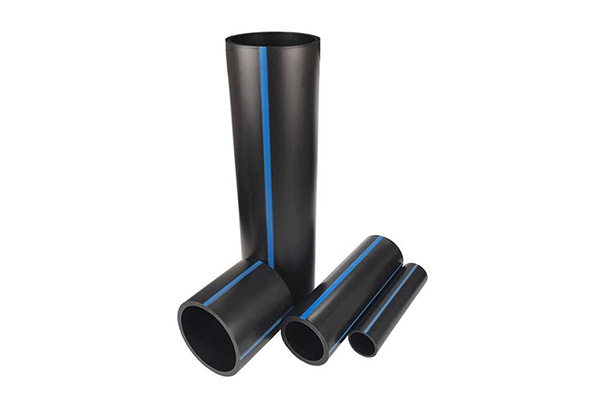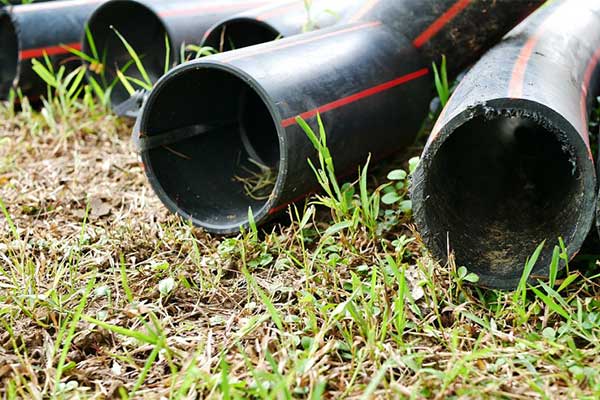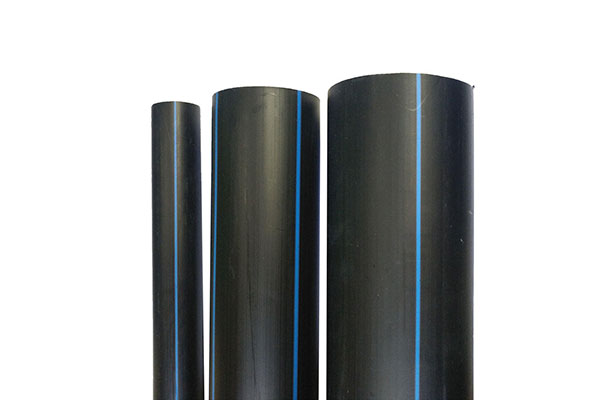HDPE Pipe Sizes: Everything You Need to Know
High-Density Polyethylene (HDPE) pipes are a go-to solution for water distribution, gas lines, sewage systems, and more, thanks to their durability, flexibility, and cost-effectiveness. One crucial aspect of working with HDPE pipes is understanding their sizes. This guide will provide a clear overview of HDPE pipe sizes, their applications, and how to choose the best size for your project.

What is HDPE Pipe?
HDPE (High-Density Polyethylene) is a thermoplastic polymer made from petroleum. Known for its strength, durability, and resistance to corrosion and chemicals, HDPE is used to manufacture pipes for many applications, including:
- Water Supply Systems
- Sewer Lines
- Irrigation Systems
- Gas Distribution
- Electrical Conduit
HDPE pipes are lightweight, easy to handle, and can be joined using various methods like butt fusion, electro-fusion, and mechanical fittings. These attributes make them a preferred choice for both residential and industrial applications.
Understanding HDPE Pipe Sizes
When it comes to HDPE pipes, sizes can be categorized based on two primary systems:
- Nominal Pipe Size (NPS)
- Outside Diameter (OD)
1. Nominal Pipe Size (NPS)
Nominal Pipe Size (NPS) is a system commonly used in the United States and is based on the approximate inside diameter of the pipe. NPS doesn’t indicate the exact dimensions of the pipe but provides a general reference point. For example, a pipe with a nominal size of 4 inches might actually have an outside diameter of 4.5 inches.
2. Outside Diameter (OD)
Outside Diameter (OD) is the actual measurement of the pipe’s diameter from one side to the other, including the pipe wall. HDPE pipes are often available in specific OD sizes, which help standardize fittings and ensure compatibility between various components of the pipeline system.
Both measurements are essential for ensuring compatibility with fittings and other components.

Standard HDPE Pipe Sizes
HDPE pipes come in a variety of sizes. Below are the most commonly used HDPE pipe sizes:
1. Small Diameter HDPE Pipes
These pipes typically range from 1/2 inch to 6 inches in diameter. They are commonly used for applications such as residential water supply lines, irrigation, and gas lines. These small-diameter pipes are easy to handle and install, making them ideal for smaller-scale applications.
Common Applications:
- Residential plumbing systems
- Agricultural irrigation systems
- Low-pressure water distribution systems
2. Medium Diameter HDPE Pipes
Pipes ranging from 8 inches to 12 inches in diameter fall into the medium category. These are used for larger-scale water distribution systems, sewage systems, and drainage systems.
Common Applications:
- Urban water supply and distribution
- Stormwater drainage systems
- Sewerage networks
3. Large Diameter HDPE Pipes
Pipes that are 16 inches and larger are classified as large-diameter HDPE pipes. These are typically used in heavy-duty applications like municipal water systems, large-scale sewage systems, and industrial applications. Large-diameter HDPE pipes are durable, capable of handling high pressures, and are corrosion-resistant.
Common Applications:
- Large-scale industrial systems
- Municipal water pipelines
- Stormwater collection systems
- Sewer mains

Factors to Consider When Choosing HDPE Pipe Sizes
Choosing the right size of HDPE pipe depends on several factors, including the nature of the application, flow rate requirements, and the installation environment. Here are some key considerations:
1. Flow Rate
The flow rate refers to the volume of water or other fluids that pass through the pipe per unit of time. Larger diameter pipes are suitable for higher flow rates, whereas smaller pipes work better for low-flow applications.
2. Pressure Rating
Pressure is an important factor when choosing HDPE pipe sizes. Pipes with larger diameters generally have higher pressure ratings and can withstand more intense flow conditions. Be sure to consider the pressure demands of your system.
3. Environmental Factors
The environment in which the pipe will be installed can impact the selection of pipe size. Factors like soil conditions, temperature, and the presence of chemicals or other corrosive agents should be taken into account when choosing the appropriate size for your HDPE pipes.
4. Installation Space
The available space for installation can also dictate the size of the pipe. For confined spaces or locations with limited access, smaller-diameter HDPE pipes may be necessary.
Benefits of Using HDPE Pipes
- Durability: HDPE pipes are resistant to corrosion, chemicals, and UV degradation, ensuring a long lifespan even in harsh environments.
- Flexibility: HDPE pipes are flexible and can withstand ground movements, making them ideal for earthquake-prone areas.
- Cost-Effectiveness: Due to their lightweight nature, HDPE pipes are easier and cheaper to transport and install compared to other materials.
- Environmental Benefits: HDPE pipes are made from recyclable material, making them a more environmentally-friendly option.
Conclusion
Understanding HDPE pipe sizes is key to selecting the right option for your project. Whether you need small-diameter pipes for residential irrigation or large-diameter pipes for municipal water distribution, HDPE offers a reliable, versatile solution.
Need guidance on selecting HDPE pipes for your project? Contact us today to find the perfect fit for your needs!
